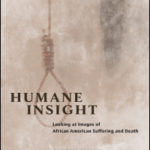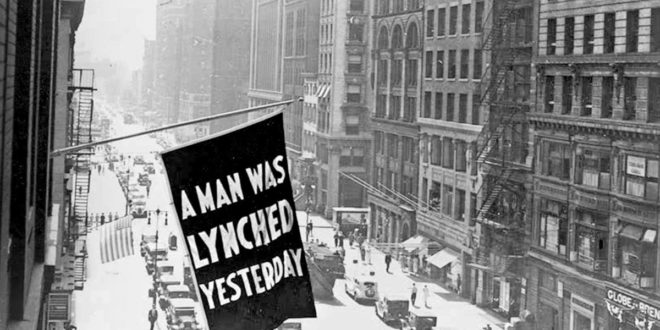Podcast: Play in new window | Download (Duration: 58:00 — 53.1MB)
Courtney Baker on the double-edged power of images of black suffering and death.
For “Lynchings on Loop” Courtney Baker, author of Humane Insight: Looking at Images of African American Suffering and Death joins us to talk about the history of images of black pain, the malleable and incomplete nature of the image, and how to proceed in our current media-saturated environment.
We are often confronted with televised images of black lives destroyed by the overreaches of the criminal justice system, most often taking the form of violent police force, and those images are replayed and retweeted on a seemingly endless loop of social media.
The proliferation of these images prompt questions about moral responsibility: should we look, should we share them, or is that a kind of voyeurism, or worse, an approbation? If we do look, how should we respond? Is there an ethics of response?
Still worse, there are those who condone and collaborate with this violence and with the sharing of these images proclaim the actions depicted in them justified.
Since publishing her book, Courtney Baker has written two articles she considers appendices, titled “Sandra Bland’s Face” and most recently “The E-Snuff of Alton Sterling and Philando Castile.” (links below)
We start there, discussing why those images — any images for that matter — cannot inherently speak any particular narrative — and how the mass media environment, as she recently writes, “carelessly circulate these images for titillation or profit or some bad faith interpretation of the exposé.”

GUEST
Courtney Baker is an associate professor of American Studies at Occidental College
ABOUT
Humane Insight: Looking at Images of African American Suffering and Death (University of Illinois Press):
 In the history of black America, the image of the mortal, wounded, and dead black body has long been looked at by others from a safe distance. Courtney Baker questions the relationship between the spectator and victim and urges viewers to move beyond the safety of the “gaze” to cultivate a capacity for humane insight toward representations of human suffering. Utilizing the visual studies concept termed the “look,” Baker interrogates how the notion of humanity was articulated and recognized in oft-referenced moments within the African American experience: the graphic brutality of the 1834 Lalaurie affair; the photographic exhibition of lynching, Without Sanctuary; Emmett Till’s murder and funeral; and the devastation caused by Hurricane Katrina. Contemplating these and other episodes, Baker traces how proponents of black freedom and dignity used the visual display of violence against the black body to galvanize action against racial injustice.
In the history of black America, the image of the mortal, wounded, and dead black body has long been looked at by others from a safe distance. Courtney Baker questions the relationship between the spectator and victim and urges viewers to move beyond the safety of the “gaze” to cultivate a capacity for humane insight toward representations of human suffering. Utilizing the visual studies concept termed the “look,” Baker interrogates how the notion of humanity was articulated and recognized in oft-referenced moments within the African American experience: the graphic brutality of the 1834 Lalaurie affair; the photographic exhibition of lynching, Without Sanctuary; Emmett Till’s murder and funeral; and the devastation caused by Hurricane Katrina. Contemplating these and other episodes, Baker traces how proponents of black freedom and dignity used the visual display of violence against the black body to galvanize action against racial injustice.
An innovative cultural study that connects visual theory to African American history, Humane Insight asserts the importance of ethics in our analysis of race and visual culture, and reveals how representations of pain can become the currency of black liberation from injustice.
RELATED
“The E-Snuff of Alton Sterling and Philando Castile”
“Sandra Bland’s Face”
MUSIC
“Alabama” by John Coltrane
“Strange Fruit” performed by Billie Holiday
“Fables of Faubus” by Charles Mingus
“John Brown’s Body” by the Oscar Peterson Trio, featuring Milt Jackson.
CREDITS
Producer & Host: Doug Storm
Assistant Producer: Rob Schoon
Board Engineer: Jonathan Richardson
Executive Producer: Joe Crawford
 WFHB Bloomington Community Radio
WFHB Bloomington Community Radio


